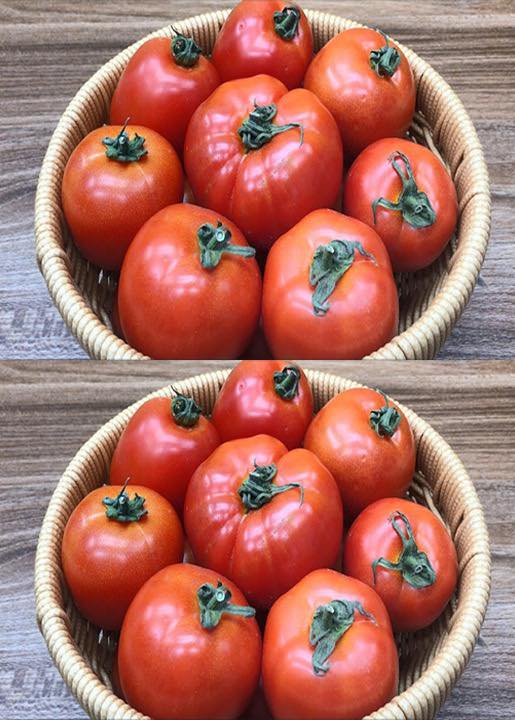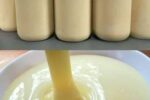Learn how to preserve tomatoes without using the refrigerator for up to 6 months!
Fruits and vegetables are essential for a healthy diet, and tomatoes are one of the most versatile ingredients in the kitchen.
It can be used in salads, sandwiches, pasta sauces and pizzas, as well as being used to prepare nutritious juices, such as tomato juice with ginger, which has health benefits.
However, tomatoes are a delicate food and can spoil quickly, especially when they are very ripe.
To avoid waste and ensure your tomatoes stay fresh for longer, it is essential to store them correctly.
Did you know that storing tomatoes in the refrigerator can affect their flavor and texture?
The cold interferes with a natural enzyme in the fruit, damaging its cell membranes, which makes the tomato mushy, with a weakened flavor and unpleasant texture.
Additionally, it tends to absorb odors from other foods in the refrigerator.
Fortunately, there are simple and efficient ways to store tomatoes outside the refrigerator, preserving their freshness, flavor and nutritional value for extended periods — in some cases, up to six months.
Below, we present different practical methods for storing tomatoes correctly, without the need for refrigeration.
Storage with stem down
This method is ideal for fresh tomatoes that are still firm for up to ten days.
Do not wash tomatoes before storing. The moisture from the water can soften the skin and accelerate rotting.
On a tray or basket, place the tomatoes with the stem facing down. This reduces water loss and helps them ripen evenly.
Avoid stacking tomatoes. Store them in a single layer, without overlapping, to prevent them from getting crushed.
Keep in a dry place at room temperature.
Conservation with paper and baking soda
Perfect for extending the shelf life of tomatoes without taking up much space, preserving them for up to 1 month.
Wrap each tomato individually in paper towels or newspaper. This reduces air contact and helps maintain optimal humidity.
Place the wrapped tomatoes in a cardboard box, without squeezing them.
Sprinkle the bottom of the box with a thin layer of food-grade baking soda.
Baking soda helps control humidity and prevents the growth of fungus.
Close the box tightly and store in a cool, dry place away from direct light.
Adhesive tape
When the tomato is still on the plant, it keeps its shelf life longer after ripening.
The deterioration process tends to accelerate from the moment the fruit is separated from the stem, as this region becomes vulnerable to the entry of microorganisms such as fungi and bacteria, which can accelerate rotting.
A simple and effective tip to slow down this process is to apply a piece of tape over the area where the stem was removed.
Although it may seem like a basic method, this protection helps to significantly reduce the growth of these microorganisms.
It is important to remember that any type of tape can be used, but before preparing recipes, the tomato must be washed after removing the tape.
Preserve with salt
This technique is ideal for preserving very ripe tomatoes that need to be preserved quickly, with a shelf life of up to 1 month.
Remove the stems and wash the tomatoes well in a solution of water and baking soda (helps to remove pesticides and impurities).
Dry completely with paper towels.
In a clean, dry glass jar, layer tomatoes interspersed with generous layers of salt.
Finish by covering the last layer with salt and seal the jar tightly. Store in a cool place, away from light.
Salt acts as a natural preservative, absorbing moisture and inhibiting the proliferation of bacteria.
Preserve with wood ash
This method is especially useful for those who grow tomatoes in large quantities, allowing them to be preserved for up to 5 to 6 months.
Choose firm tomatoes, without cracks or signs of spoilage.
Prepare pure wood ash (from burning paper, rice husk, straw or firewood). Sieve it well to remove impurities.
Line a cardboard or Styrofoam box with a layer of paper.
Add a thin layer of ash and distribute the tomatoes on top.
Cover with more ash. Repeat the layering process until all the tomatoes are used.
Close the box and store in a dry, airy place away from sunlight.
Note: This method is best suited for farmers or those who have easy access to wood ash.
How to store already cut tomatoes
Tomatoes that have been sliced, halved or cut into smaller pieces should be kept in the refrigerator, preferably in a closed container or tightly wrapped in plastic wrap.
To preserve the flavor and texture, it is best to consume these tomatoes within one or two days after cutting.
How to choose the best tomato on the market
If you want to know how to choose a quality tomato, it is important to use mainly touch and sight.
Ideally, the fruit should be firm to the touch and the color should be uniform, without greenish areas near the stem.
Contrary to what many believe, small bruises on tomatoes do not compromise their quality and can be normal.
Final tips:
- Avoid storing tomatoes with cucumbers, as cucumber contains an enzyme that reduces the absorption of vitamin C from tomatoes.
- Young children should avoid consuming tomato seeds as they are difficult to digest.
Now that you know these techniques, you can preserve your tomatoes efficiently and naturally, without relying on the refrigerator and maintaining all the flavor and nutrients of the fruit!



